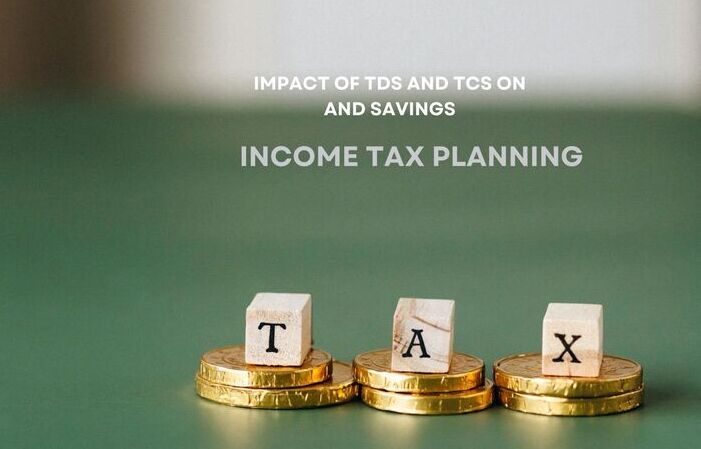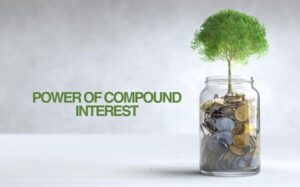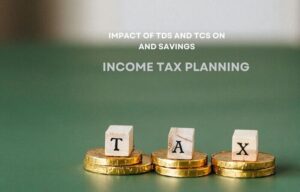The Impact of TDS and TCS on Income Tax Planning and Savings

The Indian tax system relies upon two vital components: tax deducted at Source (TDS) and Tax Collected at Source (TCS). TDS is the tax deducted from payments whenever the total amount exceeds specific thresholds. Meanwhile, TCS is the tax collected by sellers at the time of transactions with the respective buyers.
Both TDS as well as TCS are levied at the source of the transaction or income and are measures taken to streamline tax administration in India. Below, we will learn more about these essential components and how they impact savings and tax planning.
Understanding TDS
TDS is the tax that the government instantly deducts from the recipient’s income when it is earned. The recipient gets their payment only after the TDS is deducted. As per the Income Tax Act, a company or an individual can deduct TDS at the source of income when the payment of any service or goods exceeds a specified amount. The government decides the threshold and TDS rates for all goods and services for a financial year. Services included are:
- Royalty
- Legal fees
- Technical services
- Consulting
- Rent, etc.
If the TDS is applicable, the person receiving the payment after the deduction is known as a deductee, while the one who makes the deduction is called a deductor.
Understanding TCS
Under Section 206C of the Income Tax Act, sellers are required to collect Tax Collected at Source (TCS) from buyers at the time of sale on specific goods.
The applicable TCS rates vary by item:
- 5% on tendu leaves, 1% on alcohol,
- 5% on timber from leased forests,
- 1% on scrap,
- 1% on motor vehicles priced above ₹10 lakh,
- 2% on transactions involving toll plazas, quarries, mines, and parking lots,
- 1% on metals like iron ore, lignite, and coal, and
- 5% on other forest produce, excluding timber and tendu leaves.
What is the difference between TCS and TDS?
The difference between TDS vs TCS is that the seller collects the latter at the time of sale of particular goods to the buyer. Under Section 206C(1H), if a seller’s turnover exceeds ₹10 crore in the previous financial year, they must collect TCS on receipts exceeding ₹50 lakh from a single buyer in the current financial year. TCS is always collected at the time of receipt of the particular sale amount.
However, the seller is exempt from collecting tax on transactions in which the buyer has deducted tax on the products purchased from the seller in accordance with any other requirements of the Income Tax Act of 1961. If the buyer is an employee of the Central Government, State Government, High Commission, Embassy, Local Authority, Consulate, etc., TCS does not have to be withheld. Imports are also exempt from this clause.
Points of difference to note:
- TDS (Tax Deducted at Source) is the tax deducted by a person while making a payment for goods or services, whereas TCS (Tax Collected at Source) is the tax collected by the seller at the time of sale. TDS applies when purchasing goods or services, while TCS is applicable during the sale of specified goods.
- TDS typically covers payments like rent, commission, interest, salaries, and brokerage. In contrast, TCS is applied to the sale of items such as toll tickets, forest produce, cars, tendu leaves, liquor, timber, minerals, and scrap.
- TDS is deducted when the payment is made or due to be paid, whichever occurs earlier. On the other hand, TCS is collected at the time of sale. The due date for depositing TDS is the 7th of the following month, except for March, which has a deadline of 30th April of the next financial year. For TCS, the due date is also the 7th of the next month, but for March, it is 7th April. TCS returns must be filed quarterly.
- The person responsible for deducting TDS is the one making the payment (the buyer or customer). For TCS, the responsibility lies with the seller or supplier collecting the payment. TDS returns are filed using Form 24Q for salaries, 26Q for other domestic payments, and 27Q for payments to non-residents. TCS returns are filed using Form 27EQ, also on a quarterly basis.
How TDS and TCS Impact Income Tax Planning and Savings?
Now that you have understood TDS vs. TCS, let’s examine how these taxes can impact your savings and tax planning.
1. Cash Flow Management
Both TDS and TCS are collected in advance; hence, they can impact your overall cash flow. Therefore, knowing the applicable tax slabs and rates is necessary to better plan your liquidity, especially for business owners and self-employed people.
2. Advance Refunds and Taxes
If extra TDS or TCS is deducted, getting it back as a refund can take time. On the other hand, inaccurate tax deductions can lead to government penalties. Hence, it is necessary to reconcile your statements to ensure that the correct tax is deducted regularly.
3. Making the Most of Deductions
If you know your gross total income vs total income, you can adequately plan your expenses and make investments, further saving your taxes. You can invest in life insurance, PPF, health insurance, mutual funds, and more.
Final Thoughts
Knowing the difference between TCS and TDS is necessary for adequate financial savings and planning. You must also know the difference between gross total income vs. total income to understand the amount you will receive after all deductions. Knowledge of these essential income tax components will help you make the right decision for your financial stability.

Pranab Bhandari is an Editor of the Financial Blog “Financebuzz”. Apart from writing informative financial articles for his blog, he is a regular contributor to many national and international publications namely Tweak Your Biz, Growth Rocks ETC.







